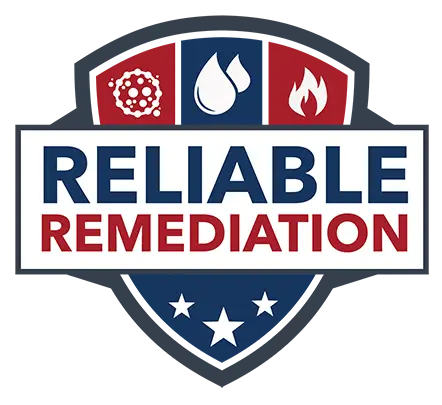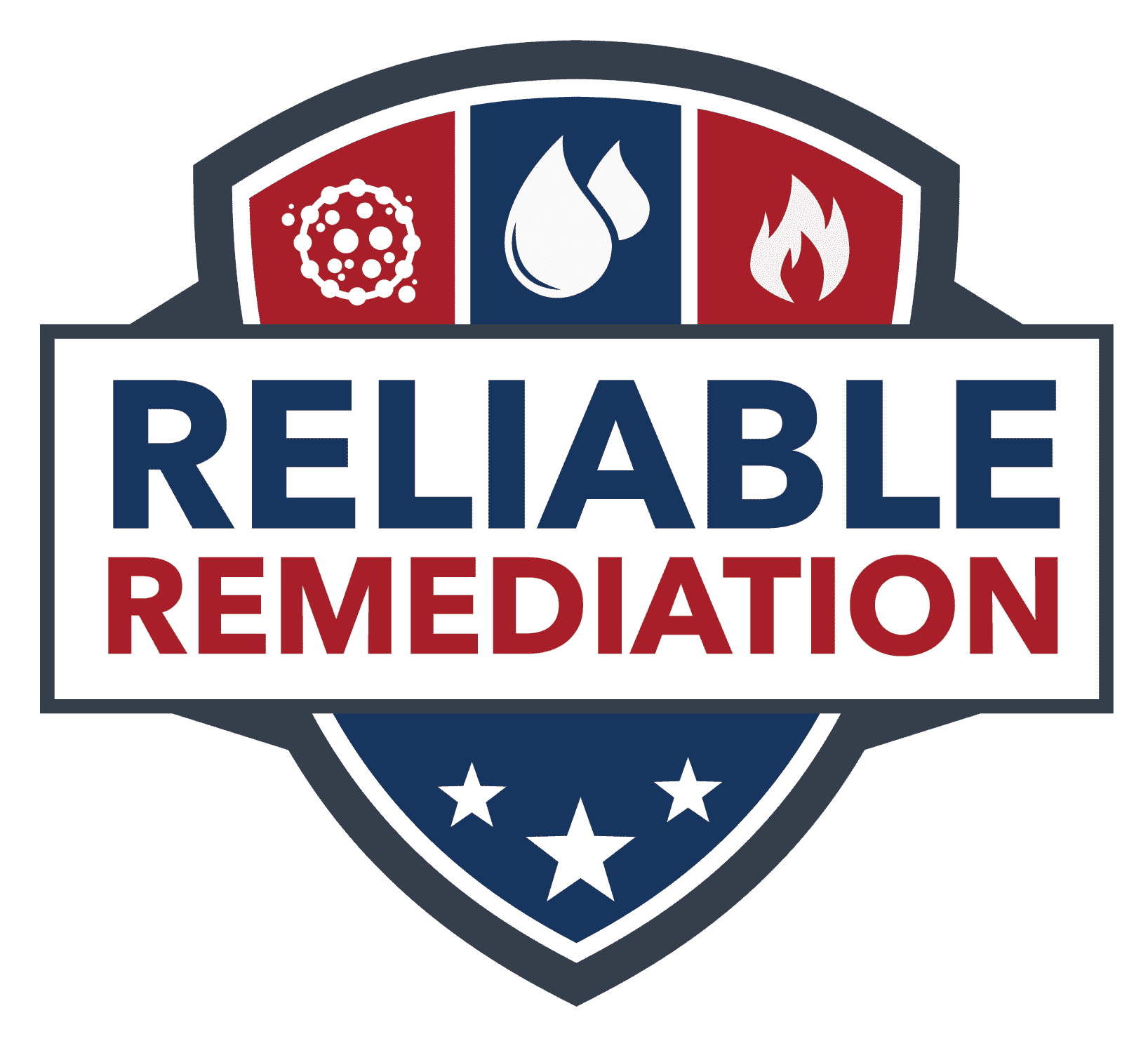Water Damage Repair Pricing
Water damage comes in many shapes and sizes and it can cause thousands of dollars of damage.
How Much Does Water Damage Repair Cost?
The cost of drying out water damage is affected by a number of factors and variables.
Flooded basements, busted pipes, roof leaks, ice dams…water damage comes in many shapes and sizes and it can cause thousands of dollars of damage. Getting dried out and avoiding mold growth from improper or inadequate drying can cost anywhere from several hundred dollars to tens of thousands of dollars. Every situation is different, every building is different, and it’s hard to pinpoint an exact price.
We’ll try to provide you with a general price range and list the factors and variables that impact the cost.
Type of Water or Source of the Water
The contamination levels in water influence clean-up costs of water damage. The category of water will also determine what materials can be dried (generally more cost effective) and what must be removed and replaced.
Category 1
Or clear water originates from a sanitary source including water supply lines, tub and shower overflows, melting ice or snow.
Category 2
Or gray water has been exposed to contaminants (it may have started out as Category 1), such as a bath or shower water drains, discharge from a washing machine or dishwasher, aquariums, or toilet bowl water (with urine, no feces), etc.
Category 3
Or black water is grossly contaminated and highly dangerous. It may contain pathogenic or toxigenic contaminants from sources like sewage, toilet backflows, seawater, river or lake water, and water containing toxic substances. This includes all floodwater. It also includes Category 1 and 2 water that may have been exposed to microbial organisms (mold) or other significant contaminants.
Primary Factors that Affect the Cost of Water Damage Mitigation
Amount of Damage
How many rooms and floors of the building have been affected? How much water needs to be extracted? The more water that gets extracted the less time it will take to dry and you also reduce the risk of the water and damaged materials from becoming contaminated and/or growing mold.
Size of the Area
How much area is affected? What is the extent of the damage? Is it inside wall cavities? Is another room or floor affected? Did water get between the flooring and the subfloor? You might see cupping/crowning of hardwoods, discoloration of grout on tile floors, etc. The larger the area or the more rooms that are affected will require more equipment to dry (dehumidifiers, air movers, and sometimes heat).
Materials Affected
What materials are affected? Can it be sanitized or does it need to be removed? Are materials like trim and cabinets real wood or medium-density fiberboard (MDF)? MDF bloats when it gets wet – it can not be returned to a pre-loss state.
How Much Time has Passed? How Long Has It Been Wet?
The longer it sits the worse it gets! Water can become bound in building materials and it will take serious professional effort and equipment to get it dry again. Using pressure differential, heat, and applied science for proper structural drying.
The level of water intrusion in a water damage event is measured by the amount of water, the materials affected, and the level of absorption, with Class 1 of water intrusion being the least dangerous and Class 4 the worst.
Class 1 indicates a minimal amount of water absorption and materials are mainly low porosity, such as a tile floor. Little moisture remains after bulk water was removed and a minimal amount of evaporation is needed for drying to complete. The water damage affects less than 5% of the combined floor, wall, and ceiling surface area.
Class 2 is due to a significant amount of water absorption. Materials that got wet are medium to high porosity (carpet, gypsum wall board). The water damage affects somewhere between 5% and 40% of the combined floor, wall, and ceiling surface area.
Class 3 indicates the greatest amount of absorption into materials, with the highest potential rate of evaporation needed after bulk water is removed. Includes major parts of structural surfaces within the wet area, such as carpet, particleboard, wall and ceiling boards. The water damage affects more than 40% of the combined floor, wall, and ceiling surface area.
Class 4 means the majority of water/moisture is trapped or bound within the building materials with a very low potential rate of evaporation after bulk water removal. Materials are typically low in porosity, may require special methods, longer drying times, or structure disassembly.
Company
A handyman, plumber, or general contractor might have a lower price than a professional water mitigation company. They also may not carry the appropriate insurance coverages or have specialized training and certifications from reputable organizations like the Institute of Inspection, Cleaning and Restoration Certification, IICRC.
We will explore common places water damage occurs:
- Basement - Extraction Only
- Basement - Extraction & Drying
- Bathroom
- Kitchen
- Attics / Roof
- Living Space / Work Space
Basement Flooded – Extraction Only – Pump Out
Average Cost for Pumping Out a Flooded Basement (Unfinished) – $750 to $1,875
Average Cost for Pumping Out a Flooded Basement (Finished) – $1,490 to $3,620
Common Causes of Water Damage in Basements
- Water heater failure;
- Flooding;
- Sump pump failure (or power outage during; and,
- Frozen pipes.
Variables That Affect the Cost of Water Extraction
Costs will vary depending on the category of water, the size of the area, the materials affected, and how long has it been wet (class of water). Basements are already susceptible to high moisture levels due to flooding and leaking pipes. An item that could increase concern is when there are HVAC units placed in the space, the mold may be affecting the indoor air quality.
Category of Water
What was the source of the water? How contaminated is the water and the affected materials?
Size of the Area
How long will it take to empty the bulk water? How much equipment will be needed?
Materials Affected
If the basement has carpet (and pad) – do you want complete extraction or will you rip out the carpet wet? Will you be removing all affected materials and contents – or will you want professional assistance?
Class of Water
How long did it sit? Will extraction be enough? Will drying and dehumidification be necessary?
Basement Water Damage – Extraction and Drying
Average Cost for Water Damage in a Flooded Basement (Unfinished) – $1,850 to $3,875
Average Cost for Water Damage in a Flooded Basement (Finished) – $2,475 to $5,660
Common Causes of Water Damage in Basements
- Water heater failure;
- Flooding;
- Sump pump failure (or power outage during; and,
- Frozen pipes.
Variables That Affect the Cost of Water Damage in Basements
Costs will vary depending on the category of water, the size of the area, the materials affected, and how long has it been wet (class of water). Basements are already susceptible to high moisture levels due to flooding and leaking pipes. An item that could increase concern is when there are HVAC units placed in the space, the mold may be affecting the indoor air quality.
Category of Water
What was the source of the water? How contaminated is the water and the affected materials? Area will need to be sanitized and cleaned before adding air movers – this will reduce the chances of contamination and airborne contaminants.
Size of the Area
How much extraction needs to be done – is there significant bulk water? Does the flooring need to have water extracted? How long will it take to empty the bulk water? How much equipment will be needed?
Materials Affected
The porous materials affected will be dried in place or removed and replaced and it will be determined by the category of water. Have contents like storage boxes, furniture etc. been affected? Can they be salvaged, dried, and/or cleaned? Will we need a portable storage container? Will we need a dumpster to discard affected materials and contents?
Class of Water
How long did it sit? Will aggressive drying and dehumidification be necessary (using heat and pressure differential)? Has the water sat for a long period soaking into concrete and wooden building materials? If water and moisture are deeply bound it will take extra time and effort to dry.
Pro Tips for Preventing Basement Water Damage
- Drain water heaters twice a year to help prevent sediment buildup.
- Install smart water leak detectors that will send an alert to your phone or email. (Some detectors can automatically shut off the water to prevent damage).
- Improve drainage around the home, ground should slope away from the building (dropping six inches for every ten feet).
- Use downspout extenders to make sure water is evacuated away and downhill of the home.
Bathroom Water Damage
Average Cost for Bathroom Water Damage – $1,180 to $4,120
Common Causes of Water Damage in Bathrooms
- Soft blockage or clog – toilet back up;
- Failed or leaking shower drain pan;
- Faulty or old wax ring (toilet); and,
- Leaking supply lines.
Variables That Affect the Cost of Water Damage in Bathrooms
Costs will vary depending on the category of water, the size of the area, the materials affected, and how long has it been wet (class of water). Bathrooms are not usually as large as other rooms, so water damage frequently affects adjacent rooms, hallways, and rooms below.
Category of Water
What was the source of the water – was it the tub overflowing or was it sewage back up? How much cleaning and sanitizing will need to take place before drying can begin?
Size of the Area
How much extraction needs to be done – is there significant bulk water? Does the flooring need to have the water extracted? Did it affect a room below or adjacent to the area? Water damage on less-permeable floors often found in bathrooms tends to spread farther under adjacent walls and into other rooms. Water can also find holes where utilities and pipes go through flooring and drain to unexpected areas.
Materials Affected
Do fixtures need to be detached? Are cabinets of a material that can be dried? What is the flooring type – each will have its own challenges in the drying process?
Class of Water
How long did it sit? Did water get under fixtures like the toilet, cabinet, or tub/shower? Is water underneath flooring or between layers of flooring? If water and moisture are deeply bound it will take extra time and effort to dry.
Pro Tips for Preventing Bathroom Water Damage
- Regularly check for signs of leaks – look for watermarks.
- Repair or replace cracked, broken, or missing tiles, which allow water to seep in behind walls and under floors.
- Test valves for your toilets, showers, and sinks regularly to ensure they are properly working.
Kitchen Water Damage
Average Cost for Kitchen Water Damage – $2,265 to $6,190
Common Causes of Water Damage in Kitchens
- Leaking supply lines;
- Faulty plumbing;
- Appliance failure (dishwasher, refrigerator, garbage disposal); and,
- Clogged drains.
Variables That Affect the Cost of Water Damage in Kitchens
Costs will vary depending on the category of water, the size of the area, the materials affected, and how long has it been wet (class of water). The multiple sources of water in the kitchen area can lead to many wet places. To keep your home or building safe, look inside of, underneath, and around your refrigerator, dishwasher, wine fridge, sink, microwave, and stove.
Category of Water
What was the source of the water – was this a leak that went unnoticed or was in a wall (dishwasher or refrigerator)? How much cleaning and sanitizing will need to take place before drying can begin?
Size of the Area
Does the flooring need to have the water extracted? Did it affect a room below or adjacent to the area? Water damage on less-permeable floors often found in kitchens tends to spread farther under adjacent walls and into other rooms. Water can also find holes where utilities and pipes go through flooring and drain to unexpected areas.
Materials Affected
Do cabinets need to be detached? Are cabinets of a material that can be dried? What is the flooring type – each will have its own challenges in the drying process?
Class of Water
How long did it sit? Did water get under cabinets? Is water underneath flooring or between layers of flooring? If water and moisture are deeply bound it will take extra time and effort to dry.
Pro Tips for Preventing Kitchen and Laundry Room Water Damage
- Inspect hoses going to and from washing machines, dishwashers, water heaters, and refrigerators. Repair or replace any damaged hoses if necessary.
- Install leak detectors that can alert you of water damage early.
Attic Water Damage – Water Damage from the Roof
Average Cost for Attic Water Damage – $2,915 to $9,505
Common Causes of Water Damage in Attics
- Leaking flashing (around chimneys, skylights vents, etc.) or shingle failure;
- Storm damage, fallen tree(s) or branches;
- Ice dams; and,
- HVAC leaks
Variables That Affect the Cost of Water Damage in Attics
Costs will vary depending on the category of water, the size of the area, the materials affected, and how long has it been wet (class of water). The number one job of your roof is to shed water and weather away from the building envelope – when water comes in from above there are a lot of rooms and building materials below that can be affected.
Category of Water
What was the source of the water – did the water run through dirty insulation, bat or rodent infestations, or mold? Has it been slowly collecting and growing mold?
Size of the Area
What has been affected by the water intrusion? Has it affected an HVAC unit or ducting? Has it traveled down walls or utility chases? Has it followed wiring, plumbing, and framing into other areas?
Materials Affected
Does the roof need to be tarped, repaired, or replaced? Will the insulation need to be removed and replaced? Has the water gotten into lighting and electrical fixtures? Does power need to be temporarily turned off to reduce the risk of fire? Have contents stored in the attic been affected?
Class of Water
How much area and how many floors are affected? Is the water bound in any of the building materials?
Pro Tips for Preventing Attic/Roof Water Damage
- Inspect your roof and make any necessary repairs, such as replacing missing, rotten, or damaged shingles.
- Remove snow from your roof to prevent potential ice dams. Snow can melt and freeze on roofs and in gutters, causing ice dams, which can lead to damage to both the exterior and interior of homes
- Remove leaves from your gutters each fall to reduce the risk of clogged drains, which can lead to ice dams in the winter.
Living Space / Office Space Water Damage
Average Cost for Water Damage in Livable/Workable Spaces – $3,265 to $18,650
Common Causes of Water Damage in Living Spaces
- Broken or leaking pipes in walls or ceilings;
- Adjacent to rooms with a water supply;
- Ice dams and frozen pipes; and,
- Undetected leaks.
Variables That Affect the Cost of Water Damage in Living Spaces
Costs will vary depending on the category of water, the size of the area, the materials affected, and how long has it been wet (class of water). Because many of these spaces do not have obvious water sources, many times water damage can go undetected until damage is extensive.
Category of Water
What was the source of the water – did a clean water supply pipe leak or break? Is this water associated with a drain? Did water come through a roof or run down walls into the space?
Size of the Area
How many floors or stories are affected? Did it affect a room below or adjacent to the area? Are surrounding walls, ceilings, and floors affected? Water can also find holes where utilities and pipes go through flooring and drain to unexpected areas.
Materials Affected
Are the carpet and pad affected? Are affected walls made of plaster or drywall? How much material will need to be removed? Was insulation affected and in need of removal?
Class of Water
How long did it sit? Did structural building materials absorb water over an extended period? What percentage of the room or area is affected?
Pro Tips for Preventing Water Damage
- Monitor your water bill for any large, unexpected increases in usage.
- Prevent frozen pipes if you live in an area that has extremely cold temperatures. Keep your heat set to at least 50 degrees and consider other precautions, like wrapping pipes with insulation.
It’s Easy to Get the Help You Need

Get an Evaluation

Receive a Customized Plan


